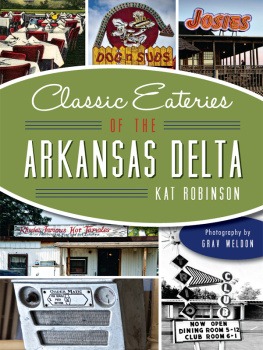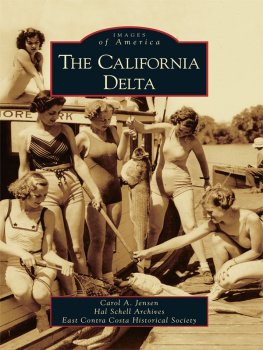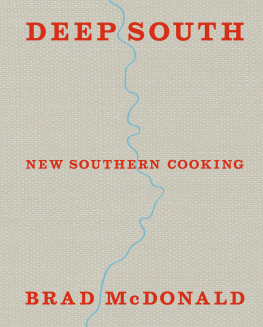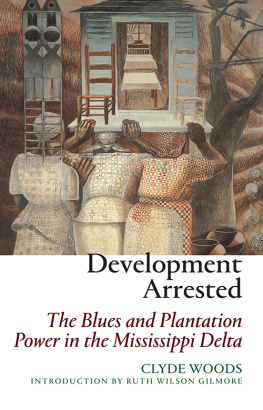


Published by American Palate
A Division of The History Press
Charleston, SC
www.historypress.net
Copyright 2016 by Anne W. Martin
All rights reserved
First published 2016
e-book edition 2016
ISBN 978.1.43965.756.0
Library of Congress Control Number: 2016938317
Print edition ISBN 978.1.46713.575.7
Notice: The information in this book is true and complete to the best of our knowledge. It is offered without guarantee on the part of the author or The History Press. The author and The History Press disclaim all liability in connection with the use of this book.
All rights reserved. No part of this book may be reproduced or transmitted in any form whatsoever without prior written permission from the publisher except in the case of brief quotations embodied in critical articles and reviews.
To Valerie and Betty Lynn, the other two Hot TaMamas
And to Mama and Daddy for introducing me to the joys of hot tamales
CONTENTS
FOREWORD
The smell of Joes White Front Caf tamales in Rosedale is the only smell that can transport me, mind, body and spirit, to somewhere other than where I am at that very moment. That aroma makes me happy and content like nothing else can. One whiff and I am climbing the rickety wooden steps into that iconic white building in downtown. One deep inhale and I am opening the screen door that is attached by one rusty hinge and one screw. Once the door flings open, it takes a minute for my eyes to adjust to the darkness. One exposed bulb on the ceiling is the only light source. Then the heat hits all at once.
I was a cautious eater. I always asked, before trying a new food, whether it was heat hot (hot because of the temperature) or tongue hot (hot because of the spice). This was my way of preparing myself and my mouth. When describing Joes White Front Caf tamales, I can safely say the heat is both.
When Daddy would head to the car with a big pot and a tight-fitting lid, I was not far behind. Lord, did I love riding with Daddy. But when the destination was Joes, I was the first one in the car. Daddy drove a Ford LTD. It was the color of spicy brown mustard. The doors were as long as a flatbed truck and heavier than lead. Those doors were too much for a small child to handle. Daddy would take off in the car with my door wide open, and once we headed out of the driveway, he would cut the wheel just enough and at the perfect angle so that the heavy door would slam shut. It was Rosedale, and it was the 70s. As far as I was concerned, my daddy was a stunt driver. Hell, Evel Knievel had nothing on Will Gourlay.
I have often wondered why it was always the men who went to get the tamales. Could it have been because generally tamale stands were not in the best part of town? Could it have been that men loved tamales more than women? Could it have been that they sold ice-cold beer by the quart and always had a good game of cards going? You can decide for yourself, but I think I already know the answer.
No one is absolutely sure of the origin of the Delta tamale. Anne Martin does an excellent job of researching, tracking down and reporting all the legends of this food we love so much. Could the Delta tamale history be traced all the way back to the Mexican-American War? Perhaps soldiers brought back recipes. Were they born out of our rich American Indian heritage? Could it have been imprinted on the Delta by Mexican migrant workers who were brought to harvest the vast Delta crops? No one will ever really know, and all I can do is draw my own conclusions based on my life experiences.
The longest four hours of my life took place in a cotton field, chopping cotton for my father. I can still remember the agony of it. The minutes went by as slow as cold molasses. The ground was hotter than the hinges of hell. The only thing I was living for was lunch.
After a long morning in the fields, I can imagine the migrant workers sitting next to the African American laborers. The Mexican field hands ate warm, hearty, spicy tamales while the African American workers most likely ate cold, hard, dry biscuits with tiny slivers of salt pork. I do not know a whole lot about much, but I do know how this all went down. I am sure it was not long before the tamale recipe swap began.
Cornmeal and pork were staples in both the Mexican and African American workers lives. These tamales were portable and could sustain the workers through hours of brutal work.
Tamale shacks and stands started popping up all over the Delta. Some people even sold them out of the backdoors of their homes to help make ends meet.
The Delta has changed in many ways, but the tamale tradition has remained unfazed and intact.
When I am asked where I am from, I always proudly say Rosedale, Mississippi. If the poor soul I am talking to does not know about the City of Brotherly Love on the banks of the Mississippi River, I get as excited as a preacher on Sunday morning about to share the gospel. I do not talk about the river or the levee or the courthouse dances. I tell them about Joes White Front Caf. I explain that Amy Evans and John T. Edge documented Joes White Front Caf for Southern Foodways Alliance. They created a Tamale Trail highlighting the tamales at Joes. I quickly tell them about the many magazine articles that have been written on our Delta tamales in such publications as Southern Living, GQ, Garden and Gun, Gourmet magazine and Food and Wine. Then I hound them until they agree to come visit.
If the Delta is the most southern place on earth, then tamales are the most southern food on earth. Many southern places have catfish, fried chicken and cornbread, but no place has tamales like ours. No place.
ELIZABETH HEISKELL
Chef
Featured on the Today Show
Owner, Debutant Farmer
ACKNOWLEDGEMENTS
When you live in the Mississippi Delta, everyone has an opinion about hot tamales. And none of them is wrong because hot tamales, after all, are a matter of taste. And a whole lot of tasting went on in preparation for this book.
First and foremost, I want to thank all of the hot tamale makers across the Delta and those with deep Delta roots who are keeping the tradition alive by making hot tamales by the dozens. Please continue to spread the love and the best food to ever come out of our corner of the world.
I will be forever grateful to Betty Lynn Cameron, my friend and former Main Street Greenville executive director, for checking her e-mail one day and discovering a message she had missed three weeks earlier from a publishing company asking if she knew anyone who might be interested in writing a book about Delta hot tamales. I sat in my car at the Sonic Drive-In in Cleveland, Mississippi, while contacting Candice Lawrence, commissioning editor at The History Press. In a matter of a few minutes, a lifelong dream began to turn into reality. See, it really does pay to read all of your e-mails.
Road trips to do interviews and shoot photographs were more fun with my partners in crime and dear friends Elizabeth Battle Long, Valerie Rankin and Debbie Leftwich. Along the way, we tasted a variety of tamales, got to explore a bit more of our beloved Delta and traveled backroads we never knew existed.
There are no words to tell Karl Wagner thank you enough for the beautiful artwork he created especially for this book. I am so honored he wanted to be a part of this project. Besides leaving me speechless, he captured the essence of hot tamales on canvas in a way I never imagined. Karl, my friend, you are a true Delta treasure.
Next page








